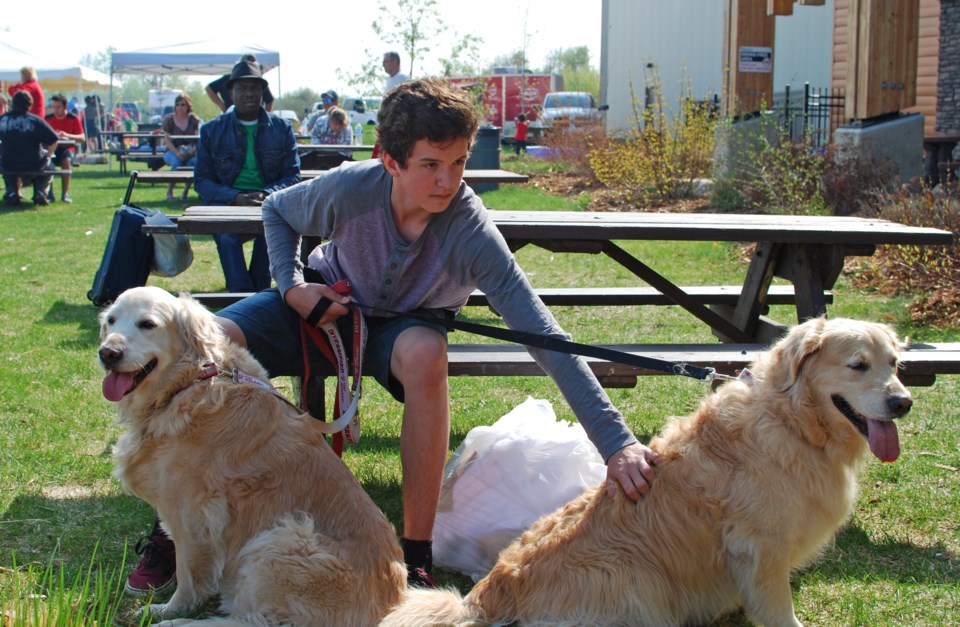After the first wave of evacuees had arrived at the Bold Center, MJ Siebold thought the makeshift animal care facility on the second floor might be a tad less busy.
After the first wave of evacuees had arrived at the Bold Center, MJ Siebold thought the makeshift animal care facility on the second floor might be a tad less busy.
“But then Anzac got evacuated,” she said the next day, in between helping displaced Wood Buffalo residents who had brought their pets with them.
She knew the Lac La Biche Regional Humane Society’ s animal care centre would be busy-but just how busy it got surpassed her expectations.
One early morning, for example, the centre was sheltering 19 dogs and 38 cats, as well as hedgehogs, rabbits, chickens and bearded dragon lizards. There were also two stray cats that somebody fleeing Fort McMurray had spotted and grabbed in an area that was on fire.
More animals continued to come in, and most came without pet supplies.
“Most people came with the shirts on their backs. They were lucky if they grabbed a leash,” said Siebold, who chairs the humane society’ s board of directors and spent several long days processing intakes.
It wasn’ t long, though, before the local community had donated more pet food than the society could use, along with animal pens, litter and other supplies.
“It’ s amazing,” Siebold said, adding that pet owners were relieved to find a functioning animal shelter.
Experts were called in to help facilitate, including Vicki Stafford, an animal control officer who coordinated relief efforts following the destruction of Slave Lake by a wildfire in 2011. Around 10 per cent of animals were only housed at the Bold Center temporarily while their owners ate, showered and figured out their next move.
“People are very grateful for the service,” said Siebold, who described some of the people coming in, especially early on, as “shell-shocked.”
Some of the animals were faring alike, but registered veterinary technician Brittany Bryks said that’ s not surprising in the circumstances.
“There have been a lot of stressed-out animals, obviously, because most of them aren’ t used to traveling that long of a distance,” she said.
Bryks works at the local veterinary clinic, Lakeland Animal Care Group, which offered on-call emergency services for animals with medical needs that couldn’ t wait. The Alberta Veterinary Medical Association gave permission for pet prescriptions to be refilled even if owners didn’ t have the necessary paperwork. Bryks said the clinic and the humane society have also been liaising with other care facilities and animal rescue organizations.
Siebold said this is an extreme example of what the local humane society was created to do, even while the non-profit organization is still in its infancy.
“This has been a steep learning curve for us, but we’ re here to help,” she said.
